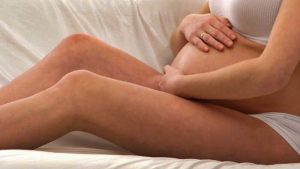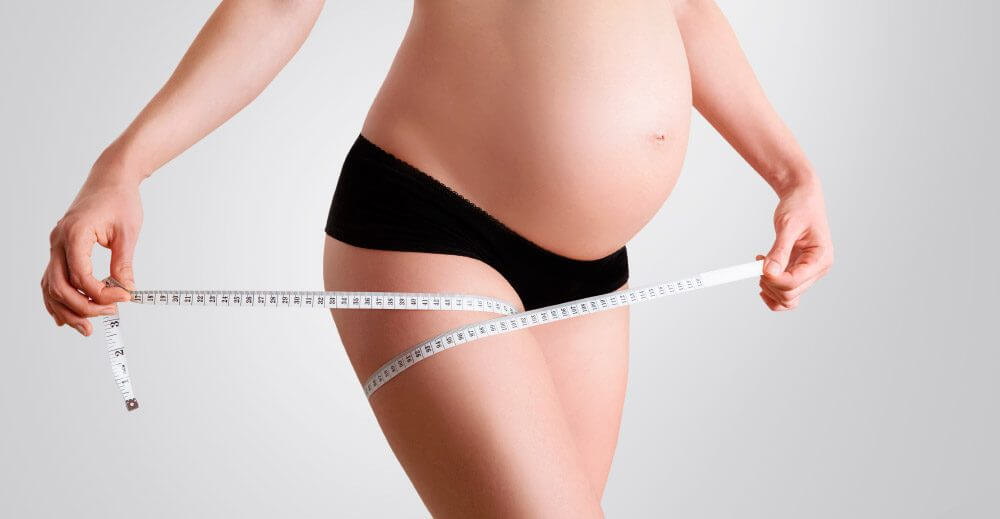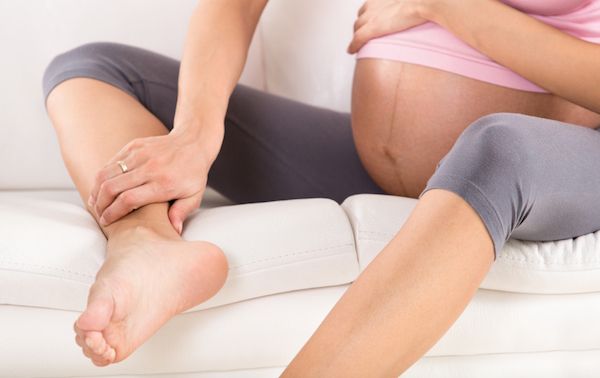How to Get Rid of Varicose Veins after Pregnancy

In this article we’ll provide tips on how to prevent, relieve and get rid of varicose veins after pregnancy.
Circulation problems are very common in pregnant women. There can be many different factors behind them.
Hormones, weight gain and the pressure of the uterus on certain veins are just some of the reasons why many women suffer from varicose veins during pregnancy. The legs are the most common problem area.
Varicose veins may cause pain or discomfort both during and after pregnancy. In simple terms, varicose veins are inflamed blood vessels that are visible through the skin.
They are common in women who are expecting a baby. While you’re pregnant, your body produces a larger quantity of blood, which needs to circulate through your system.
This can cause inflammation and lead to varicose veins. What’s more, the weight of your baby bump can compress certain blood vessels, making it more difficult for blood to pass through them.
The appearance of varicose veins may be accompanied by a tingling feeling, or a sensation of heaviness in the legs which can lead to fatigue.
Although they usually go away on their own in the first few months after childbirth, there are some things you can do to speed up the process and get rid of varicose veins.
How to get rid of varicose veins
Exercise
This will improve your circulation and help prevent varicose veins from becoming permanent.
Exercise has many other benefits, both for your baby and yourself. It will improve your overall health and help your baby develop better.
Maintain a healthy weight
This is one of the key factors to getting rid of varicose veins. Being overweight causes blood vessels to become inflamed, due to the increase in pressure on the veins and circulatory system.
Switch position
Although we all know that sitting down all day is far from ideal, it isn’t a good idea to be on your feet for long periods, either. As your pregnancy progresses, your weight will go up.
This means that it can be a bad idea to stay in one position for more than 50 minutes at a time. Time to get moving!
“To keep the body in good health is a duty… otherwise we shall not be able to keep our mind strong and clear”
-Buddha-

Stop crossing your legs
Many women cross their legs when they’re sitting down. If you’re pregnant and have already experienced varicose veins, however, it’s best to avoid this position.
It generates higher blood pressure in the legs, which contributes to varicose veins.
Take cold showers
Taking a shower in cold water will relieve the tension and pressure that you may feel in your legs.
If you can’t give up your warm shower, rinse the area where the varicose veins are appearing with cold water before you finish. Avoid bathing in very hot water.
Sleep on your left side
This is a rule that most pregnant women follow once their bump has started to appear. The reason behind it is that the lower vena cava runs down the right side of the body.
This means that sleeping on your left side will relieve pressure on this important blood vessel.
Give up smoking
This might seem like an obvious one, but if you haven’t given up yet, keep in mind that smoking during pregnancy is harmful to your health and that of your baby.
Since smoking affects blood circulation, varicose veins are just one of a long list of risks.

Say goodbye to salt
A high consumption of salt makes our bodies retain more liquid. This causes tissue in the legs to swell and put additional pressure on the surrounding blood vessels.
Eat potassium-rich foods
In general, drinking plenty of water and eating a healthy diet are good ways to maintain a healthy weight.
But potassium-rich foods are the best for eliminating excess liquid and salt from the body to get rid of varicose veins.
Give compression socks a go
One thing that can help to relieve pressure on the legs is wearing special socks or pantyhose designed to increase circulation in the legs.
These are thicker than usual, and help to reactivate blood flow in the legs to gradually get rid of varicose veins.
Additionally, complementary medicine offers several alternatives for treating varicose veins during and after pregnancy:
Acupuncture or Shiatsu
A good practitioner of these techniques may be able to relieve the symptoms of circulatory problems and improve blood flow.
Aromatherapy
Speak to an aromatherapy professional about pregnancy-safe essential oils that may help relieve symptoms of varicose veins. Some oil blends can be applied topically or via massage.
In this article we’ll provide tips on how to prevent, relieve and get rid of varicose veins after pregnancy.
Circulation problems are very common in pregnant women. There can be many different factors behind them.
Hormones, weight gain and the pressure of the uterus on certain veins are just some of the reasons why many women suffer from varicose veins during pregnancy. The legs are the most common problem area.
Varicose veins may cause pain or discomfort both during and after pregnancy. In simple terms, varicose veins are inflamed blood vessels that are visible through the skin.
They are common in women who are expecting a baby. While you’re pregnant, your body produces a larger quantity of blood, which needs to circulate through your system.
This can cause inflammation and lead to varicose veins. What’s more, the weight of your baby bump can compress certain blood vessels, making it more difficult for blood to pass through them.
The appearance of varicose veins may be accompanied by a tingling feeling, or a sensation of heaviness in the legs which can lead to fatigue.
Although they usually go away on their own in the first few months after childbirth, there are some things you can do to speed up the process and get rid of varicose veins.
How to get rid of varicose veins
Exercise
This will improve your circulation and help prevent varicose veins from becoming permanent.
Exercise has many other benefits, both for your baby and yourself. It will improve your overall health and help your baby develop better.
Maintain a healthy weight
This is one of the key factors to getting rid of varicose veins. Being overweight causes blood vessels to become inflamed, due to the increase in pressure on the veins and circulatory system.
Switch position
Although we all know that sitting down all day is far from ideal, it isn’t a good idea to be on your feet for long periods, either. As your pregnancy progresses, your weight will go up.
This means that it can be a bad idea to stay in one position for more than 50 minutes at a time. Time to get moving!
“To keep the body in good health is a duty… otherwise we shall not be able to keep our mind strong and clear”
-Buddha-

Stop crossing your legs
Many women cross their legs when they’re sitting down. If you’re pregnant and have already experienced varicose veins, however, it’s best to avoid this position.
It generates higher blood pressure in the legs, which contributes to varicose veins.
Take cold showers
Taking a shower in cold water will relieve the tension and pressure that you may feel in your legs.
If you can’t give up your warm shower, rinse the area where the varicose veins are appearing with cold water before you finish. Avoid bathing in very hot water.
Sleep on your left side
This is a rule that most pregnant women follow once their bump has started to appear. The reason behind it is that the lower vena cava runs down the right side of the body.
This means that sleeping on your left side will relieve pressure on this important blood vessel.
Give up smoking
This might seem like an obvious one, but if you haven’t given up yet, keep in mind that smoking during pregnancy is harmful to your health and that of your baby.
Since smoking affects blood circulation, varicose veins are just one of a long list of risks.

Say goodbye to salt
A high consumption of salt makes our bodies retain more liquid. This causes tissue in the legs to swell and put additional pressure on the surrounding blood vessels.
Eat potassium-rich foods
In general, drinking plenty of water and eating a healthy diet are good ways to maintain a healthy weight.
But potassium-rich foods are the best for eliminating excess liquid and salt from the body to get rid of varicose veins.
Give compression socks a go
One thing that can help to relieve pressure on the legs is wearing special socks or pantyhose designed to increase circulation in the legs.
These are thicker than usual, and help to reactivate blood flow in the legs to gradually get rid of varicose veins.
Additionally, complementary medicine offers several alternatives for treating varicose veins during and after pregnancy:
Acupuncture or Shiatsu
A good practitioner of these techniques may be able to relieve the symptoms of circulatory problems and improve blood flow.
Aromatherapy
Speak to an aromatherapy professional about pregnancy-safe essential oils that may help relieve symptoms of varicose veins. Some oil blends can be applied topically or via massage.
All cited sources were thoroughly reviewed by our team to ensure their quality, reliability, currency, and validity. The bibliography of this article was considered reliable and of academic or scientific accuracy.
- Arora M. Management of varicose veins. JK Science 2017. Available at: https://doi.org/10.9738/INTSURG-D-14-00084.1.
- Bootun R, Onida S, Lane TRA, Davies AH. Varicose veins and their management. Surgery (United Kingdom) 2016. Available at: https://doi.org/10.1016/j.mpsur.2016.02.002.
- Mandavia R, Anwar MA, Davies AH. Varicose veins. Metabolism of Human Diseases: Organ Physiology and Pathophysiology 2014. Available at: https://doi.org/10.1007/978-3-7091-0715-7_40.
This text is provided for informational purposes only and does not replace consultation with a professional. If in doubt, consult your specialist.








